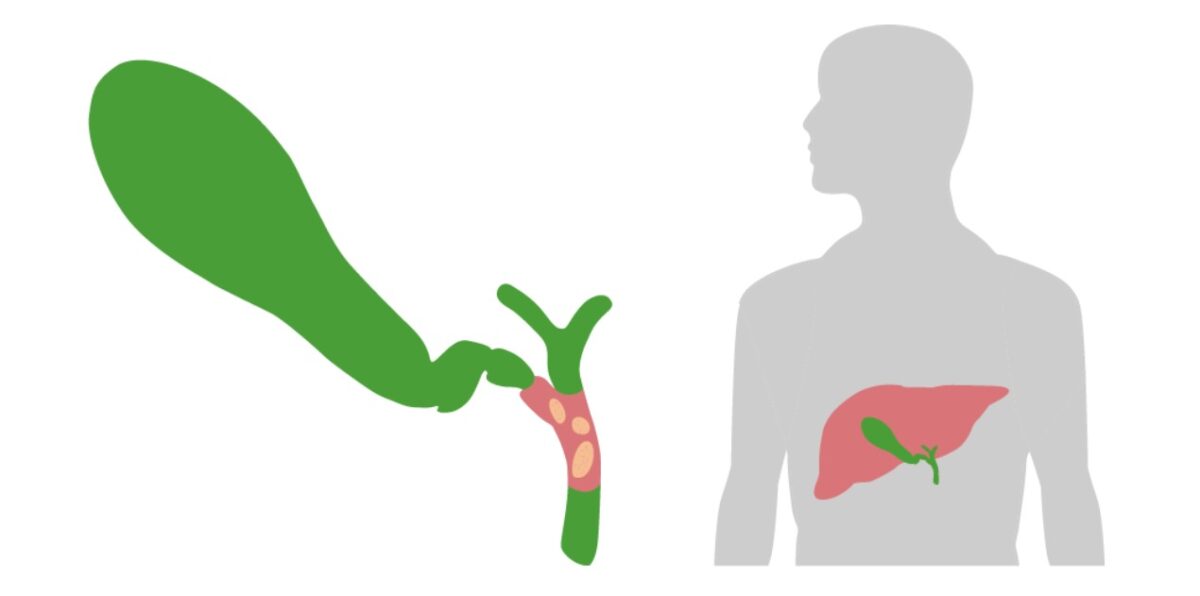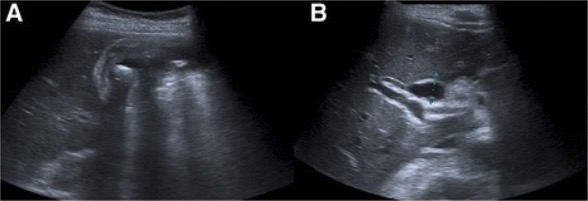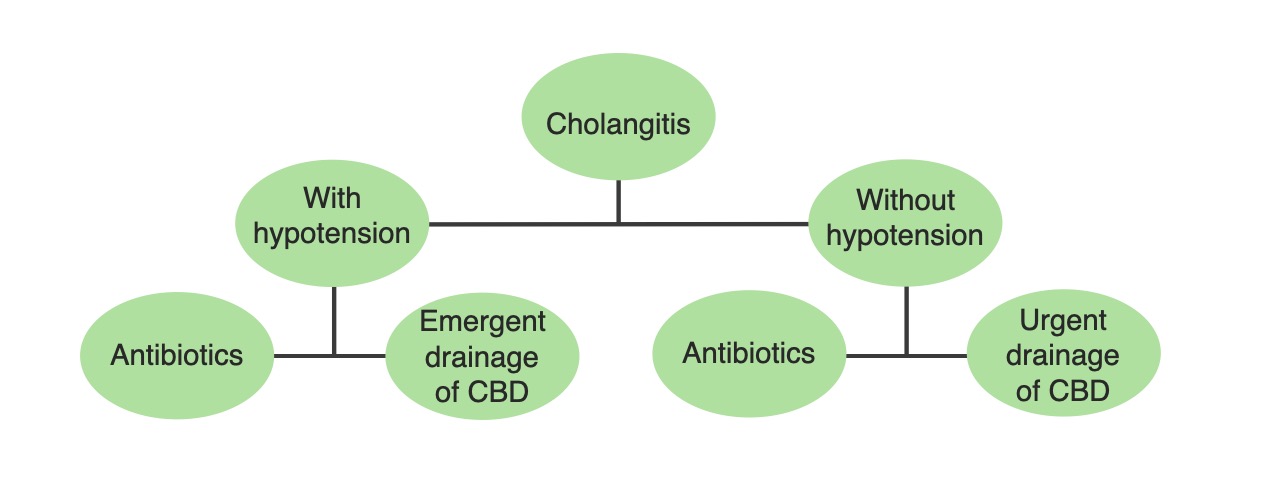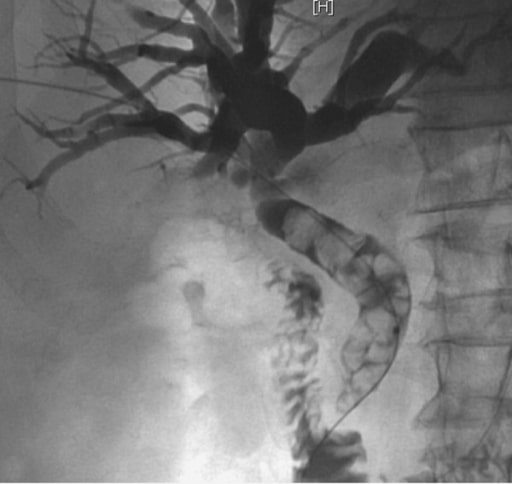Acute cholangitis refers to acute inflammation in the bile duct system; it is a life-threatening condition characterized by fever, jaundice, and abdominal pain. This condition develops as a result of stasis and infection of the biliary tract. Septic shock, liver abscess, and multi-organ dysfunction are potential serious complications. The diagnosis is confirmed with ultrasound (or other hepatobiliary imaging studies) showing dilation of the common bile duct (CBD) or gallstones, elevated liver function tests, and leukocytosis. Treatment includes hemodynamic stabilization, broad-spectrum antibiotics, urgent biliary drainage, and addressing the underlying etiology (e.g., cholecystectomy for gallstones).
Last updated: May 17, 2024
Mnemonic: Bacteria Bacteria Bacteria are prokaryotic single-celled microorganisms that are metabolically active and divide by binary fission. Some of these organisms play a significant role in the pathogenesis of diseases. Bacteriology responsible for cholangitis—KEEPS:

Gallbladder and biliary tract: Bacteria from the duodenum can ascend into the bile duct due to an obstruction or a disruption in the sphincter of Oddi.
Image by Lecturio.

Obstruction (usually due to a stone) of the CBD is a crucial step in the development of acute cholangitis.
Image by Lecturio.Note: If the patient is hemodynamically unstable and has clinical evidence of acute cholangitis, this imaging workup will be skipped. The patient should proceed directly to biliary decompression.

Acute cholangitis: Abdominal ultrasound showing gallbladder wall thickening, pericholecystic fluid and cholelithiasis (a). The common bile duct is dilated (b).
Image: “Abdominal ultrasound” by Serviço de Gastrenterologia e Hepatologia, Hospital de Santa Maria, Centro Hospitalar Lisboa Norte, Avenida Professor Egas Moniz, Lisboa, 1649-035, Portugal. License: CC BY 4.0
A simplified management algorithm for acute cholangitis based on the hemodynamic stability of the patient: Definitive treatment requires source control with biliary drainage. Therefore, this treatment is performed emergently in patients who are hemodynamically unstable.
Image by Lecturio.
A patient presented to the emergency department with Charcot triad and was diagnosed with acute cholangitis. Percutaneous transhepatic cholangiography shows a dilated common bile duct containing multiple calcified stones affected above the papilla of Vater. Stone extraction and biliary drainage would be performed during this procedure.
Image: “Percutaneous cholangiography” by Service of Gastroenterology and Hepatology, Geneva University Hospitals, Rue Gabrielle Perret Gentil 24, 1211 Geneva, Switzerland. License: CC BY 2.0The following table outlines common biliary diagnoses and how they may be differentiated from acute cholangitis:
| Condition | Pathology | Clinical presentation | Diagnosis | Management |
|---|---|---|---|---|
| Cholelithiasis Cholelithiasis Cholelithiasis (gallstones) is the presence of stones in the gallbladder. Most gallstones are cholesterol stones, while the rest are composed of bilirubin (pigment stones) and other mixed components. Patients are commonly asymptomatic but may present with biliary colic (intermittent pain in the right upper quadrant). Cholelithiasis | Presence of gallstones Gallstones Cholelithiasis (gallstones) is the presence of stones in the gallbladder. Most gallstones are cholesterol stones, while the rest are composed of bilirubin (pigment stones) and other mixed components. Patients are commonly asymptomatic but may present with biliary colic (intermittent pain in the right upper quadrant). Cholelithiasis in the gallbladder Gallbladder The gallbladder is a pear-shaped sac, located directly beneath the liver, that sits on top of the superior part of the duodenum. The primary functions of the gallbladder include concentrating and storing up to 50 mL of bile. Gallbladder and Biliary Tract: Anatomy | Asymptomatic or biliary colic (constant, dull RUQ pain Pain An unpleasant sensation induced by noxious stimuli which are detected by nerve endings of nociceptive neurons. Pain: Types and Pathways lasting < 6 hours) |
|
|
| Cholecystitis Cholecystitis Cholecystitis is the inflammation of the gallbladder (GB) usually caused by the obstruction of the cystic duct (acute cholecystitis). Mechanical irritation by gallstones can also produce chronic GB inflammation. Cholecystitis is one of the most common complications of cholelithiasis but inflammation without gallstones can occur in a minority of patients. Cholecystitis | Cystic Cystic Fibrocystic Change duct obstruction with inflammation Inflammation Inflammation is a complex set of responses to infection and injury involving leukocytes as the principal cellular mediators in the body’s defense against pathogenic organisms. Inflammation is also seen as a response to tissue injury in the process of wound healing. The 5 cardinal signs of inflammation are pain, heat, redness, swelling, and loss of function. Inflammation of the gallbladder Gallbladder The gallbladder is a pear-shaped sac, located directly beneath the liver, that sits on top of the superior part of the duodenum. The primary functions of the gallbladder include concentrating and storing up to 50 mL of bile. Gallbladder and Biliary Tract: Anatomy | Constant RUQ pain Pain An unpleasant sensation induced by noxious stimuli which are detected by nerve endings of nociceptive neurons. Pain: Types and Pathways (> 6 hours), fever Fever Fever is defined as a measured body temperature of at least 38°C (100.4°F). Fever is caused by circulating endogenous and/or exogenous pyrogens that increase levels of prostaglandin E2 in the hypothalamus. Fever is commonly associated with chills, rigors, sweating, and flushing of the skin. Fever, nausea Nausea An unpleasant sensation in the stomach usually accompanied by the urge to vomit. Common causes are early pregnancy, sea and motion sickness, emotional stress, intense pain, food poisoning, and various enteroviruses. Antiemetics and vomiting Vomiting The forcible expulsion of the contents of the stomach through the mouth. Hypokalemia, Murphy’s sign |
|
|
| Choledocholithiasis Choledocholithiasis Presence or formation of gallstones in the common bile duct. Cholelithiasis | CBD CBD Atypical Parkinsonian Syndromes obstruction due to a stone | Postprandial colicky RUQ pain Pain An unpleasant sensation induced by noxious stimuli which are detected by nerve endings of nociceptive neurons. Pain: Types and Pathways > 6 h, jaundice Jaundice Jaundice is the abnormal yellowing of the skin and/or sclera caused by the accumulation of bilirubin. Hyperbilirubinemia is caused by either an increase in bilirubin production or a decrease in the hepatic uptake, conjugation, or excretion of bilirubin. Jaundice |
|
ERCP ERCP Fiberoptic endoscopy designed for duodenal observation and cannulation of vater’s ampulla, in order to visualize the pancreatic and biliary duct system by retrograde injection of contrast media. Endoscopic (vater) papillotomy may be performed during this procedure. Primary Sclerosing Cholangitis and cholecystectomy Cholecystectomy Cholecystectomy is a surgical procedure performed with the goal of resecting and extracting the gallbladder. It is one of the most common abdominal surgeries performed in the Western world. Cholecystectomy is performed for symptomatic cholelithiasis, cholecystitis, gallbladder polyps > 0.5 cm, porcelain gallbladder, choledocholithiasis and gallstone pancreatitis, and rarely, for gallbladder cancer. Cholecystectomy |
| Acute cholangitis | Bile Bile An emulsifying agent produced in the liver and secreted into the duodenum. Its composition includes bile acids and salts; cholesterol; and electrolytes. It aids digestion of fats in the duodenum. Gallbladder and Biliary Tract: Anatomy duct infection | RUQ pain Pain An unpleasant sensation induced by noxious stimuli which are detected by nerve endings of nociceptive neurons. Pain: Types and Pathways, fever Fever Fever is defined as a measured body temperature of at least 38°C (100.4°F). Fever is caused by circulating endogenous and/or exogenous pyrogens that increase levels of prostaglandin E2 in the hypothalamus. Fever is commonly associated with chills, rigors, sweating, and flushing of the skin. Fever, jaundice Jaundice Jaundice is the abnormal yellowing of the skin and/or sclera caused by the accumulation of bilirubin. Hyperbilirubinemia is caused by either an increase in bilirubin production or a decrease in the hepatic uptake, conjugation, or excretion of bilirubin. Jaundice, hypotension Hypotension Hypotension is defined as low blood pressure, specifically < 90/60 mm Hg, and is most commonly a physiologic response. Hypotension may be mild, serious, or life threatening, depending on the cause. Hypotension, tachycardia Tachycardia Abnormally rapid heartbeat, usually with a heart rate above 100 beats per minute for adults. Tachycardia accompanied by disturbance in the cardiac depolarization (cardiac arrhythmia) is called tachyarrhythmia. Sepsis in Children |
|
|
Other potential diagnoses to consider: